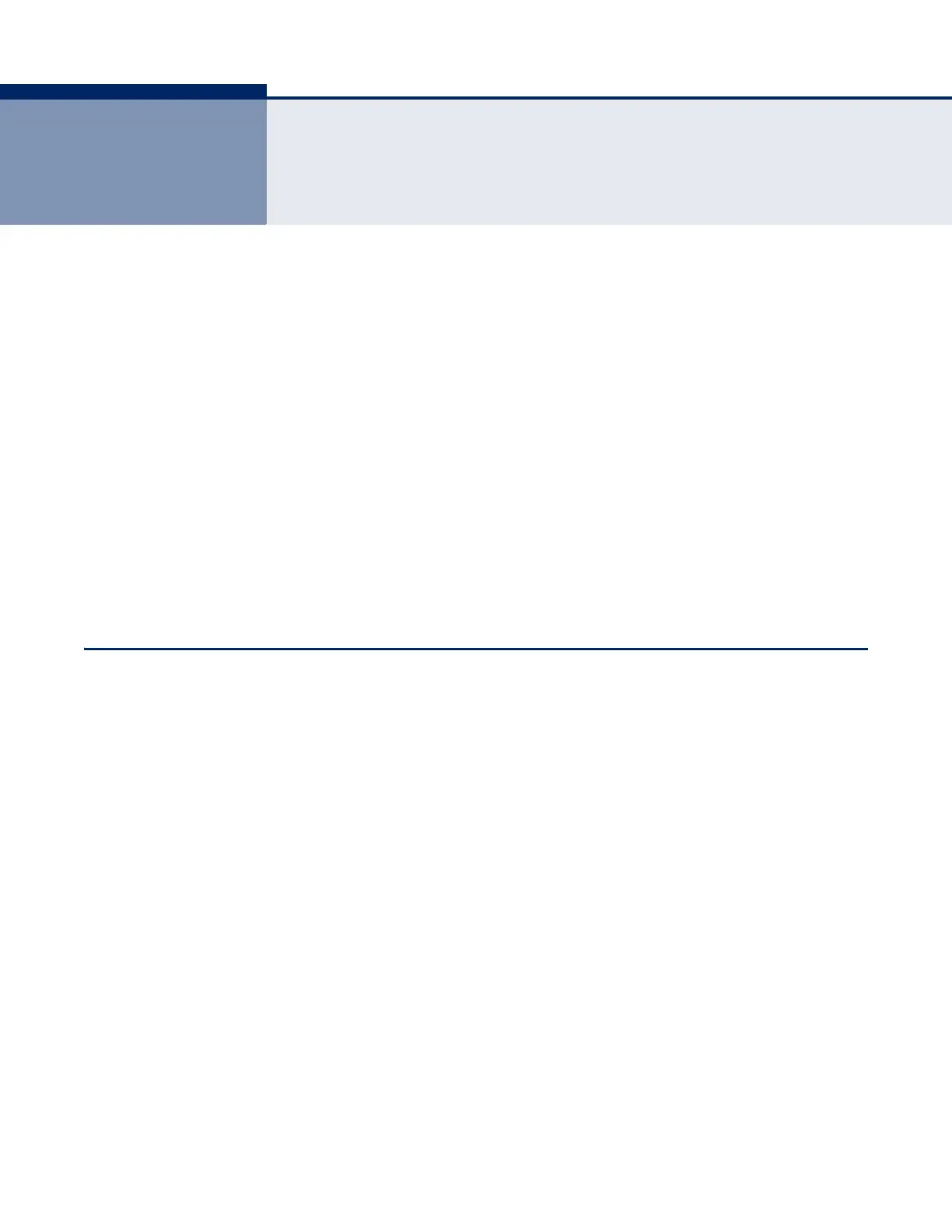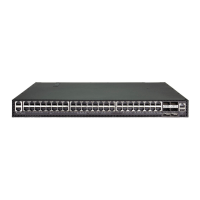– 269 –
10 CLASS OF SERVICE
Class of Service (CoS) allows you to specify which data packets have
greater precedence when traffic is buffered in the switch due to congestion.
This switch supports CoS with eight priority queues for each port. Data
packets in a port’s high-priority queue will be transmitted before those in
the lower-priority queues. You can set the default priority for each
interface, and configure the mapping of frame priority tags to the switch’s
priority queues.
This chapter describes the following basic topics:
◆ Layer 2 Queue Settings – Configures each queue, including the default
priority, queue mode, queue weight, and mapping of packets to queues
based on CoS tags.
◆ Layer 3/4 Priority Settings – Selects the method by which inbound
packets are processed (DSCP or CoS), and sets the per-hop behavior
and drop precedence for internal processing.
LAYER 2 QUEUE SETTINGS
This section describes how to configure the default priority for untagged
frames, set the queue mode, set the weights assigned to each queue, and
map class of service tags to queues.
SETTING THE
DEFAULT PRIORITY
FOR INTERFACES
Use the Traffic > Priority > Default Priority page to specify the default port
priority for each interface on the switch. All untagged packets entering the
switch are tagged with the specified default port priority, and then sorted
into the appropriate priority queue at the output port.
CLI REFERENCES
◆ "switchport priority default" on page 1162
COMMAND USAGE
◆ This switch provides eight priority queues for each port. It uses
Weighted Round Robin to prevent head-of-queue blockage, but can be
configured to process each queue in strict order, or use a combination
of strict and weighted queueing.
◆ The default priority applies for an untagged frame received on a port
set to accept all frame types (i.e, receives both untagged and tagged
frames). This priority does not apply to IEEE 802.1Q VLAN tagged

